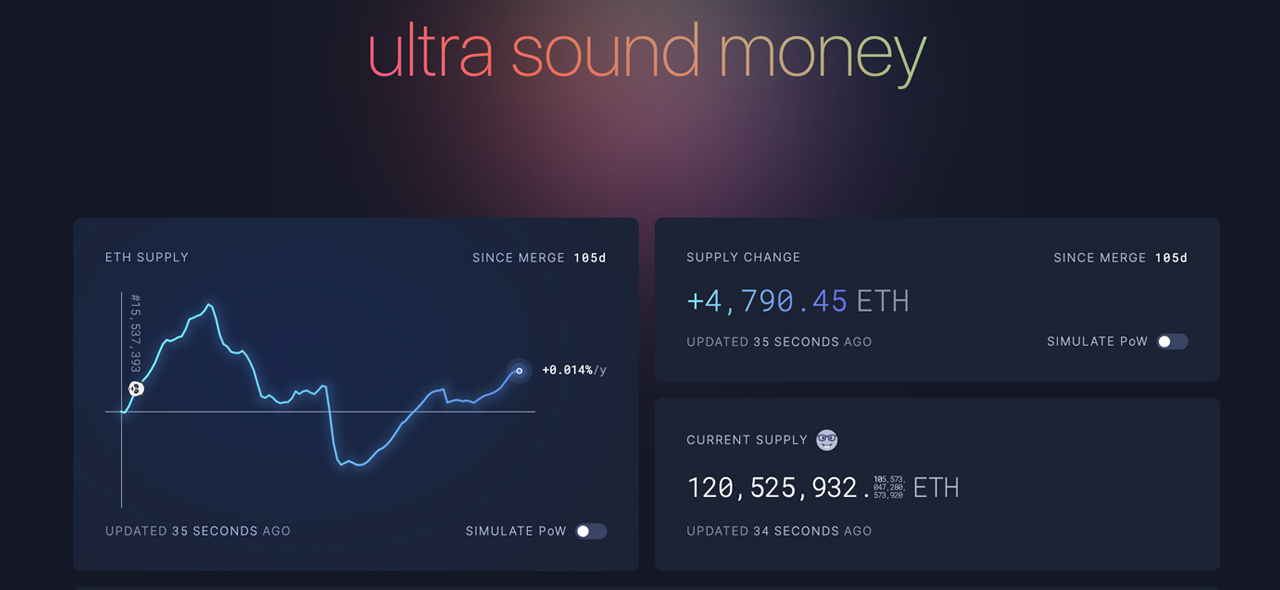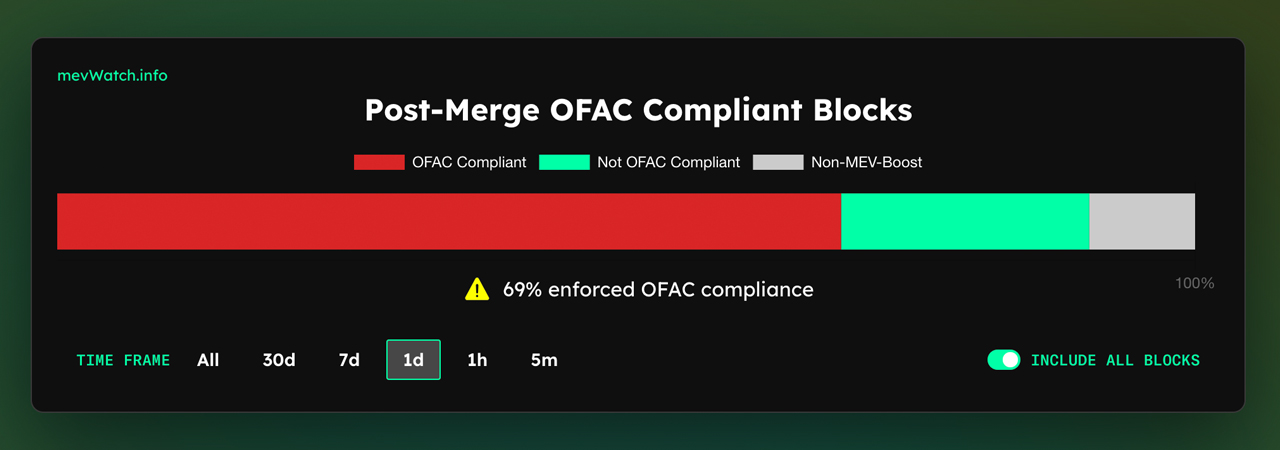Its been 105 days since Ethereum transitioned from a proof-of-work (PoW) blockchain to a proof-of-stake (PoS) network and the number of Ethereum validators is set to surpass 500,000 in 2023. According to metrics, Ethereum’s issuance rate of new coins has dropped considerably and only 4,790.45 ether has been minted since The Merge took place on Sept. 15, 2022.
Ethereum’s Issuance Rate Is 0.014% per Annum in Contrast to the Simulated PoW Inflation Rate of 3.58% per Year
The Ethereum (ETH) network has been operating under its proof-of-stake (PoS) consensus algorithm for more than three months and since then, 4,790.45 ethereum or $5.7 million in value has been added to the supply. Statistics from ultrasound.money show that Ethereum’s current issuance rate of new coins per annum is 0.014%.

That’s a whole lot different than what it would be if Ethereum was still a PoW chain, according to ultrasound.money’s simulation metrics. If ETH remained a PoW chain during the last 105 days, then the issuance rating or inflation rate per annum would be 3.58%. That would be approximately 1,247,674.60 ether added to the supply by 10:15 a.m. (ET) on Dec. 29, 2022. Instead of $5.7 million in value added, a PoW ETH chain would have added more than $1.5 billion in value.
In addition to the lower issuance rate, Ethereum also has a burn mechanism, and records show roughly 658,000 ether is burned each year. To date, 2,795,773 ether or $8.78 billion in U.S. dollar value has been burned by destroying ETH since the Aug. 5, 2021 London Hard Fork. Data from Dune Analytics indicates the biggest leader in terms of the number of ETH burned is tied to traditional ethereum (ETH) transfers, which account for 247,008 ETH burned since the London Hard Fork.
The non-fungible token (NFT) marketplace Opensea and its users are responsible for burning 229,928.53 ether and the decentralized exchange (dex) Uniswap V2 has burned 143,394.07 ether since Aug. 5, 2021. Transferring the stablecoin USDT has equated to 123,014.14 ether burned to date, and Swaprouter 02 accounts for the fifth largest burner with 110,868.70 ether destroyed.

Furthermore, the number of validators validating consensus within the Ethereum network is nearing 500,000, according to current beaconcha.in statistics. On Dec. 28, 2022, 492,863 validators were recorded, which is a marked increase from last year’s number of validators 12 months ago, which was roughly 275,054. Data from mevwatch.info also shows that 69% of the blocks mined on the ETH network are enforced with the U.S. Office of Foreign Assets Control (OFAC) compliance.
What do you think about Ethereum’s network issuance rate since it transitioned from proof-of-work (PoW) to proof-of-stake (PoS)? Let us know what you think about this subject in the comments section below.
Image Credits: Shutterstock, Pixabay, Wiki Commons
Disclaimer: This article is for informational purposes only. It is not a direct offer or solicitation of an offer to buy or sell, or a recommendation or endorsement of any products, services, or companies. Bitcoin.com does not provide investment, tax, legal, or accounting advice. Neither the company nor the author is responsible, directly or indirectly, for any damage or loss caused or alleged to be caused by or in connection with the use of or reliance on any content, goods or services mentioned in this article.




